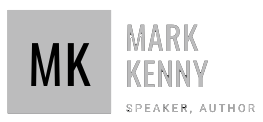Each week, I read articles and listen to podcasts from various resources on how to build a functional, collaborative, and aligned team. Here are my top five picks from last week. I have added my comment about each article.
If You Want to Get Better at Something, Ask Yourself These Two Questions by Harvard Business Review
Summary: No matter how you want to improve, you need to ask yourself two questions first: 1) Do you really want to do better? 2) Are you willing to feel the discomfort of trying new things that won’t work right away? You need to honestly answer “yes” to both of these questions in order to grow. Learning anything new is, by its nature, uncomfortable. So be prepared to try things that won’t work the first time, and to feel awkward and novice and messy. If you remain committed through all of that, you’ll get better.
My Comments: the number one indicator of whether a team is going to take the next step to become more functional, more collaborative, and more aligned, is the willingness of the leader. It is hard to build teams but that is the very role of a leader. This article articulates two great questions to self-evaluate whether or not you are ready to do what is needed to build a functional, collaborative, aligned team.
10 Important Conversations to Have When Building a High-Performing Team by Lolly Daskal
Summary: It’s important for leaders to communicate with their teams in order to build and develop high-performing teams. By regularly having open and honest communication with team members, leaders can better understand their needs, provide support, and address any issues or challenges that may arise.
My Comments: the magic with teams occurs in the conversations they have together. A team cannot become functional, collaborative, and aligned without great conversations. Conversations require intentionality. This articles gives some good questions to initiate healthy conversations within the team.
The Never Ending Meeting by The Table Group (podcast episode)
Summary: Despite how a ‘never-ending meeting’ might sound, progressive meetings are our favorite. This week, the team discusses the efficacy of progressive meetings, and why bringing new people into the room is one of the best ways to refine any idea or project.
My Comments: making your meetings great is critical to building a functional, collaborative, and aligned team. I advocate for four types of meetings and the technique described in this episode is a wonderful way to incorporate multiple meetings into one progressive meeting, with clarity and purpose, to make a decision or create a plan quickly.
8 Strategies To Maximize Team Trust In Your Business by Martin Zwilling
Summary: Team trust in each other, as well as management, is critical to the long-term success of every venture. It is key to employee engagement, a positive culture, and the productivity necessary to survive and thrive in this rapidly changing worldwide economy which challenges every business today.
My Comments: trust is foundational for every team and I’m always looking for ways that leaders can build trust. This article provides some good suggestions that I hope will provoke thought into ways you might not have considered.
Don’t Create a Laundry List. Create a Strategic Plan by Liz Weber
Summary: It happens frequently. It happens with C-Suite executives as well as with mid-level managers. It happens when the excitement of DOING things to transform the organization takes hold. ‘It’ is when the strategic planning team focuses more on what they’re going to DO instead of what they want to ACHIEVE. It is when they stop thinking strategically. It causes teams to create laundry lists instead of strategic plans. …when the strategic planning team focuses more on what they’re going to DO instead.
My Comments: interesting perspective to shift your strategic planning process by focusing on outcomes instead of an action items list (called “strategic objectives”). It’s important to have three strategic anchors that guide the current outcomes (this is not represented in the article), but set that aside as you read the article and use it to reset your thinking to outcomes instead of just “doing.”

